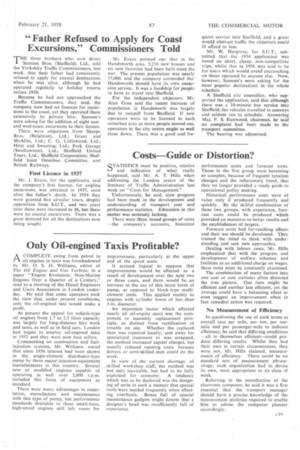Only Oil-engined Taxis Profitable?
Page 57

If you've noticed an error in this article please click here to report it so we can fix it.
ACOMPLETE swing from petrol to oil engines in taxis was foreshadowed by Mr. D. S. D. Williams, editor of The Oil Engine and Gas Turbine, in a paper "Engine Evolution; Non-Marine Engines Over a Quarter of a Century," read to a meeting of the Diesel Engineers and Users Association in London yesterday. He said that some operators took the view that, under present conditions, only the oil-engined taxi would make a profit.
At present the appeal for vehicle-type oil engines from 1.7 to 2.5 litres capacity was largely for long-distance hire work and taxis, as well as in field cars. London had begun to employ oil-engined taxis in 1952 and they were now best sellers.
Commenting on combustion and fuelinjection systems, Mr. Williams stated that since 1956 interest had been shown in the single-element distributor-type pump by three major injection-equipment manufacturers in this country. Several new or modified engines capable of operating at well over 2,000 r.p.m. included this form of equipment as standard.
There were many advantages in installation, manufacture and maintenance with this type of pump, but performance standards desirable in these small-bore. high-speed engines still left room for improvement, particularly at the upper end of the speed scale.
It seemed logical to suppose that improvements would •be effected as a result of development over the next two or three years, and, there would be an increase in the use of this latest form of pump, as opposed to block-type multielement units. This applied mainly to engines with cylinder bores of less than 5-in diameter.
An important factor which affected nearly all oil-engine users was the component or assembly replacement principle, as distinct from rectification of trouble on site. Whether the replaced item was repaired locally, sent away for specialized treatment or was scrapped, the method increased capital charges, but usually reduced running costs because drivers or semi-skilled men could do the work.
In view of the current shortage of skilled workshop staff, the method was not only inevitable, but had to be fully exploited for economy. A tendency which was to be deplored was the designing of units in such a manner that special tools were needed frequently when effecting overhauls. Boxes full of special maintenance gadgets might denote that a designer's head was insufficiently full of experience.












































































































